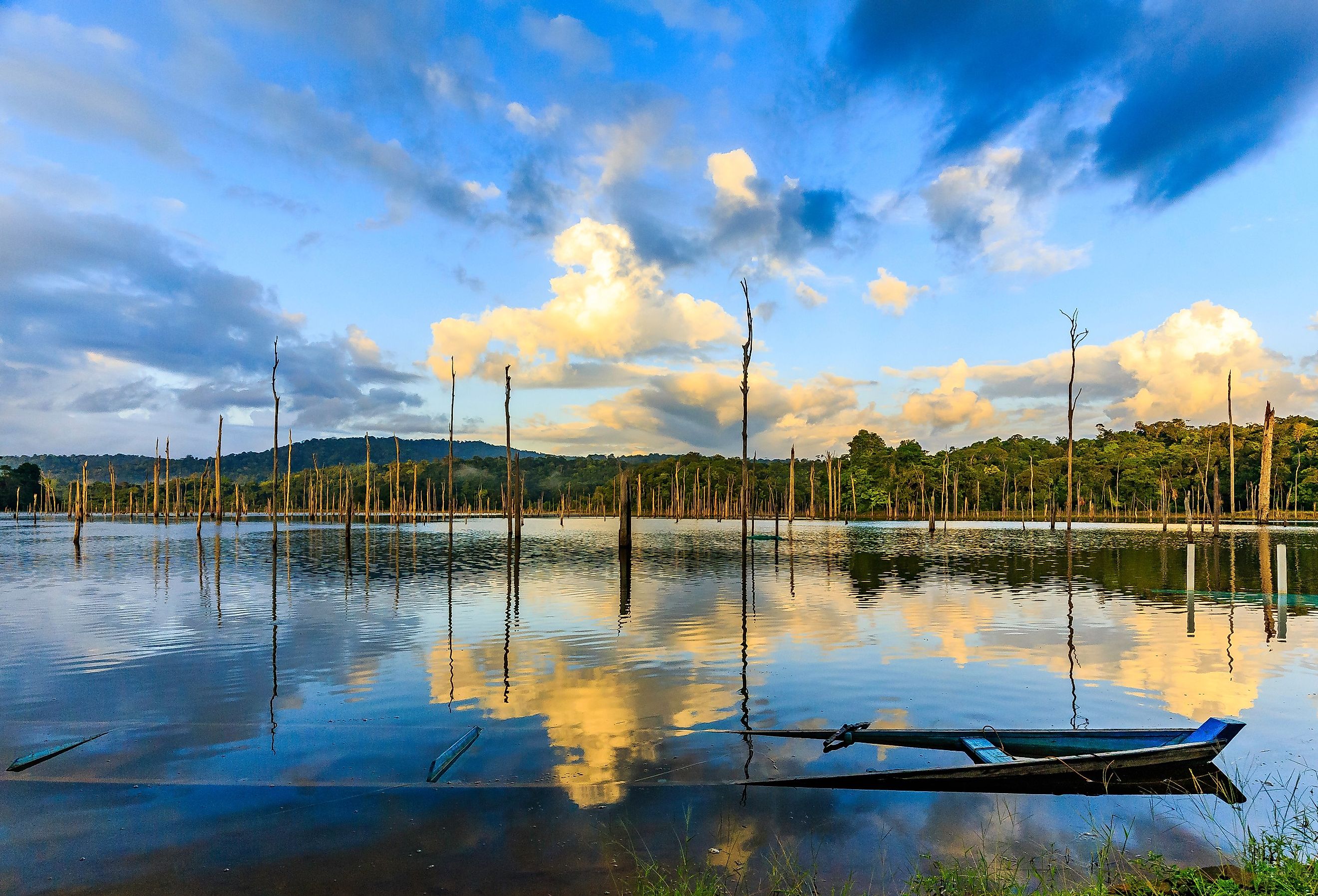
Blommestein Lake
Blommestein Lake is a man-made reservoir in Suriname, the smallest country in South America, located in the northeastern tip of the continent. Known previously as Dutch Guiana, Suriname is the smallest South American country—both by measures of surface area—and population. The official name of Blommestein Lake is Prof. Dr. Ir. W. J. van Blommesteinmeer. Blommestein Lake is the largest lake in Suriname and one of the largest reservoirs in the world.
Origin of the Name
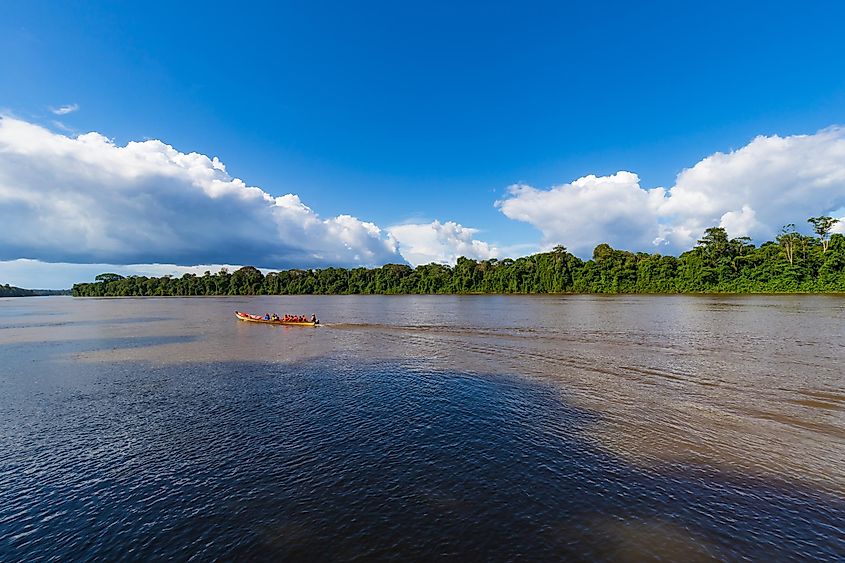
Officially known as Prof. Docor Ir. W. J. van Blommesteinmeer, the lake’s official designation is meant to honor the memory of the Dutch water and irrigation engineer who helped design the project. While Prof. Blommesteinmeer, (in some accounts shortened as Blommestein), was Dutch, he was born in Surakarta, today a densely populated city in Indonesia’s province of Central Java. While the exact circumstances surrounding his birth and professional career are uncertain, the histories of both Indonesia and Suriname are closely intertwined with that of the Netherlands as the two countries were—at one time or another—Dutch colonies.
While Bloomstein Lake is officially known as Prof. Docor Ir. W. J. van Blommesteinmeer, locals often refer to the lake as Brokopondo in reference to the town of Brokopondo. Brokopondo is a small town nestled on the Suriname River near where Bloomstein Lake is located. Today, the town serves as the capital town of Suriname’s Brokopondo District and is located on the eastern side of the country.
About Lake Bloomstein
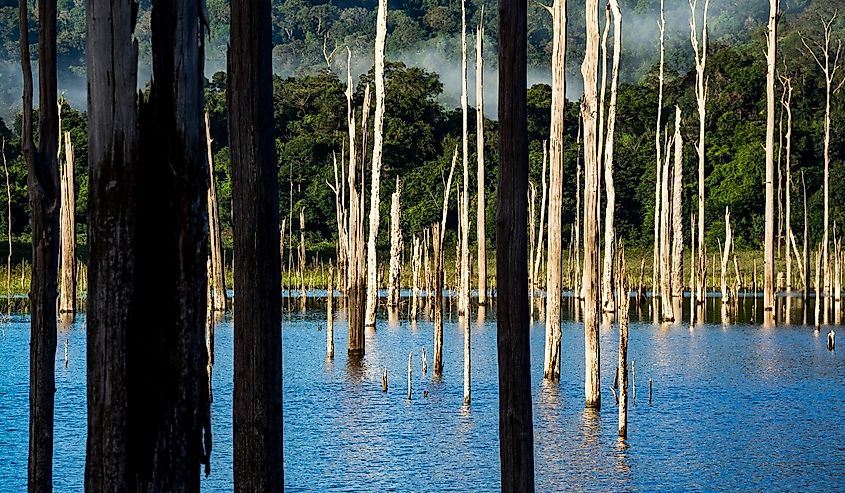
Lake Bloomstein occupies an area of about 579 square miles (1,500 square kilometers). While it is the largest in the South American country, it is completely dwarfed by Ghana’s Lake Volta which, at 3,280 square miles, is the largest reservoir in the world. Still, Lake Bloomstein is the first large reservoir in a tropical rainforest and, at the time of its completion, would become the 41st largest reservoir in the world.
The area Lake Bloomestein occupies was previously a rich, tropical rainforest that was a habitat for a wide variety of plant and animal life. The lake was constructed by the daming of the Suriname River, the river that lends the country its name. The Suriname River rises where the Wilhelmina and Eilerts de Haan ranges meet, then runs for approximately 300 miles in a northeastward direction right into the Atlantic Ocean. In its course, the Suriname River passes through Paramaribo, the country’s capital.
Lake Bloomestein is dammed at Afobaka, a village located about 5 miles from Brokopondo town and about 69 miles directly south of Suriname’s capital, Paramaribo. It has a maximum depth of 177 feet ( 54 meters). As to the periphery shoreline, Suriname’s largest lake hits 1,100 miles (1,770 kilometers) nearly equal to the 1,264-mile-long shoreline of Toledo Bend Lake, the biggest artificial body of water in Texas. Lake Bloomestein’s catchment area is vast and stretches to 4,845 square miles (or 12,550 square kilometers). The lake’s extensive catchment area represents a whopping 76% of the Suriname River Basin. The reservoir is located about 93.2 miles from the mouth of the Suriname River, hence significantly removed from the coastal region.
Lake Bloomstein’s History
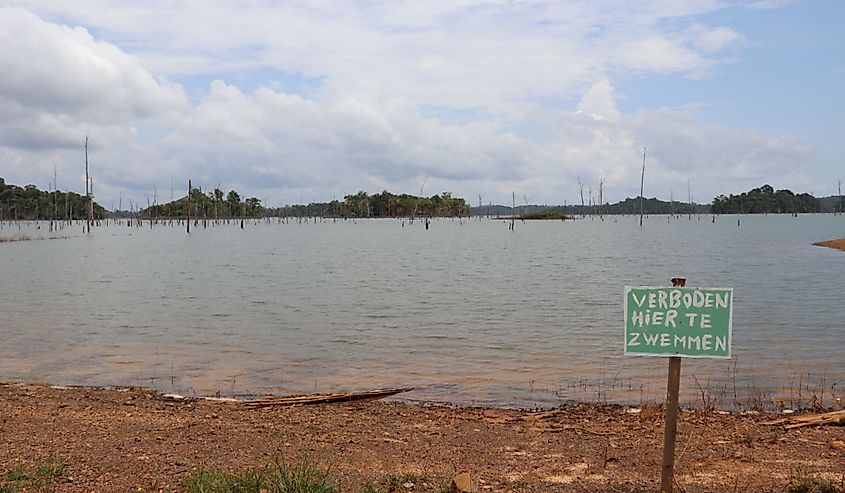
Lake Bloomestein was constructed with the purpose of generating electricity in the form of hydroelectric power. The government of Suriname intended to channel the power generated to plants around the region involved in the processing of bauxite into alumina. Bauxite, according to the US Geological Society, is “a naturally occurring, heterogeneous material composed primarily of one or more aluminum hydroxide minerals.” Bauxite, however, also has other compounds including iron oxide, various mixtures of silica—as well as other impurities. Alumina, the main product to which the Lake Bloomstein project was devoted, is the main material in the production of aluminum. While the United States has only small amounts of bauxite ore, particularly in such Southern states as Alabama, Georgia, and Arkansas, Suriname has for nearly a century been among the world’s leading producers of bauxite.
Before the construction of Lake Blommestein, the Suriname government conducted several scientific studies to assess the technical and economic viability of the project. At the conclusion of these studies, a joint venture would be inked between the Suriname government and the Suriname Aluminum Company (SURALCO). This agreement was signed in 1958. Aside from the economic viability studies, the Foundation for Scientific Research in Surinam and the Netherlands Antilles, a group of islands in the Caribbean Sea that formerly constituted an autonomous part of the Kingdom of the Netherlands, conducted investigations to assess the ecological impact of the project.
After the feasibility studies, the construction of Lake Blommestein would begin in earnest in 1961. It would go on for three years, terminating in 1964. It would then be “closed,” an industry phrase that ironically refers to its opening on February 1, 1964.
Ecological Implications of Lake Blommestein
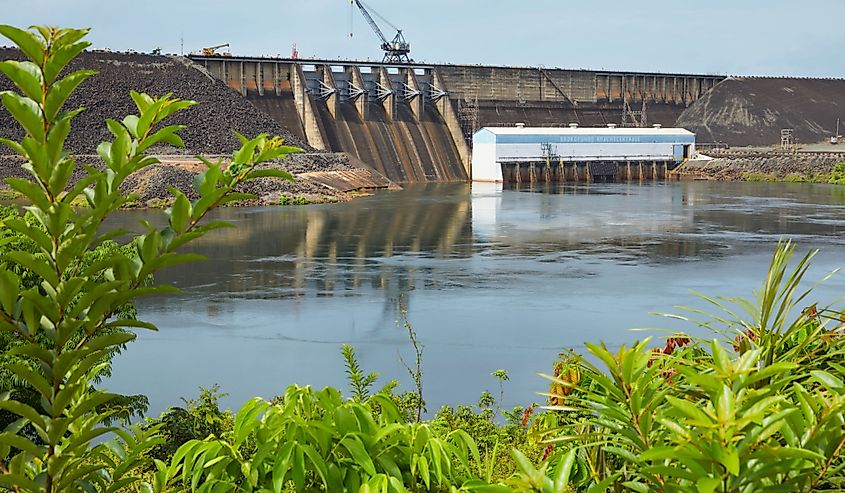
While there are some few gains that one can point to, including the generation of hydroelectric power as well as the consequent employment of tens, perhaps even hundreds, the construction of the Lake Bloomstein reservoir has had, to a large extent, a decidedly negative ecological effect. For instance, since the trees were not burnt or otherwise removed from the lake’s bottom, some remained standing. Others, however, broke off and floated, leading to the long process of decay. The presence and condition of these trees would affect the lake’s use in several ways. Navigation would be impeded, fishing would be hampered all while the quality of water would significantly deteriorate. Also, two years after the dam’s completion, as was expected, water hyacinth would carpet more than half of Lake Blommestein’s surface, resulting in the further depletion of oxygen levels.
Moreover, with the construction of the dam, and the subsequent rise in water levels, an ecological disaster would soon emerge: several wild animals were at real risk of drowning. This resulted in what came to be known as “Operation Gwamba,” an animal rescue operation immortalized in the 1967 book, Time is Short and the Water Rises by John Walsh.
Fortunately, the water hyacinth problem would be eradicated, thanks to chemical control. Still, according to a 2003 report by the World Bank, “the Brokopondo Dam in Suriname inundated about 160,000 hectares of biologically valuable tropical rainforest and is known for serious water quality and aquatic weed problems, while providing relatively little electric generating capacity.” For perspective, the average electricity production per hectare of dams averages about 60 ha/MW. Plugging these metrics, Lake Blommestein should have been generating more than 2,600 megawatts. Instead, it generates a dismal 30 megawatts.











